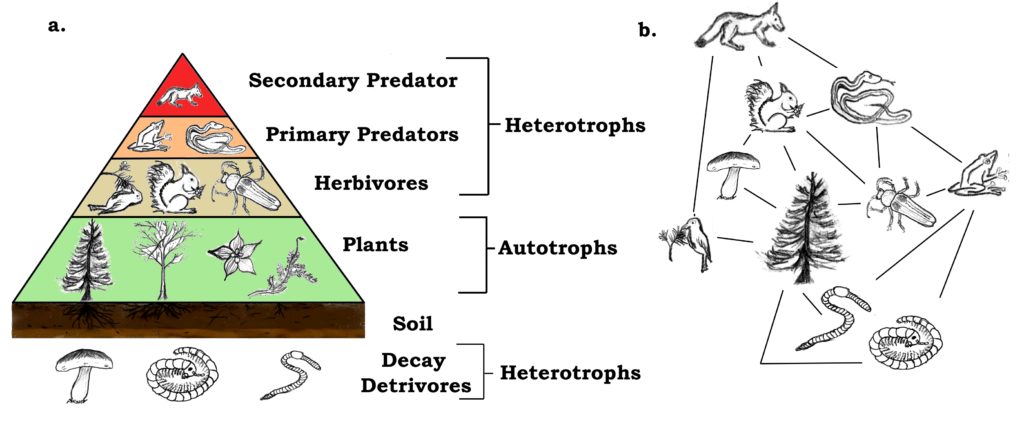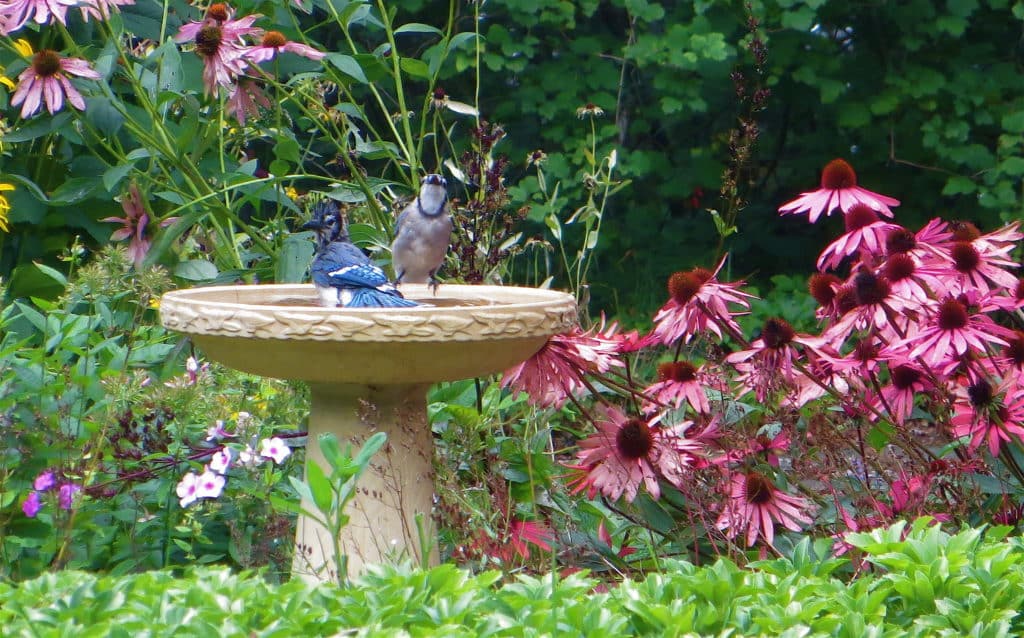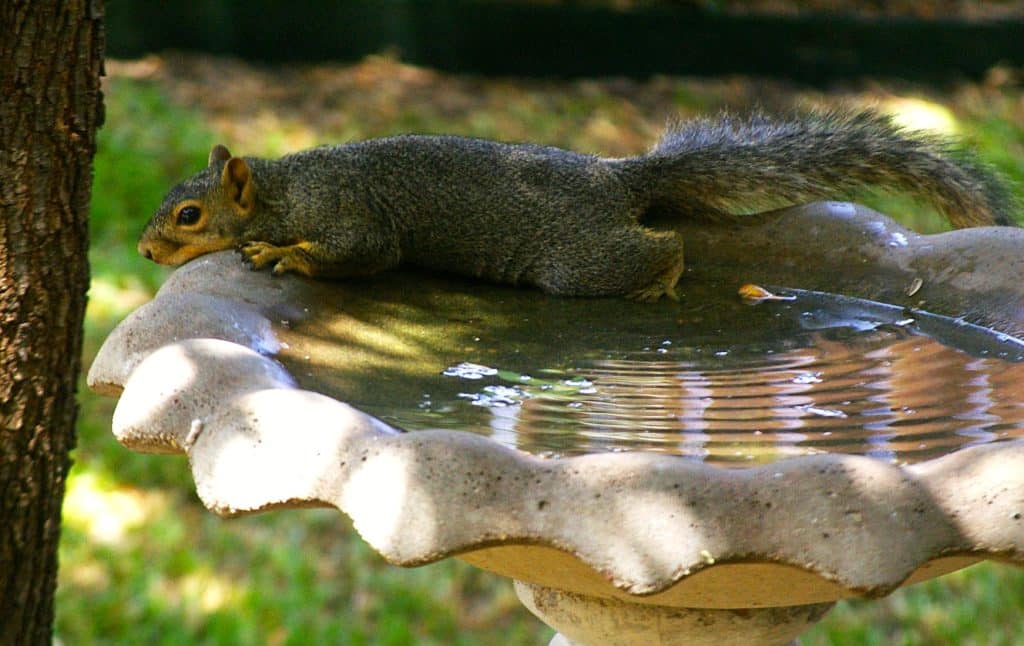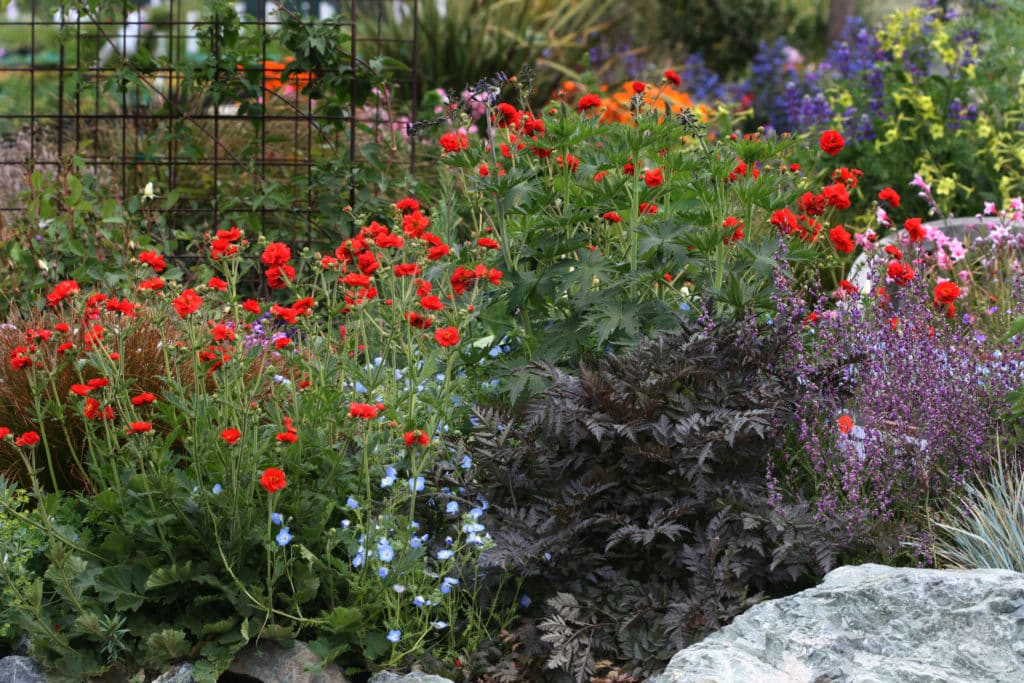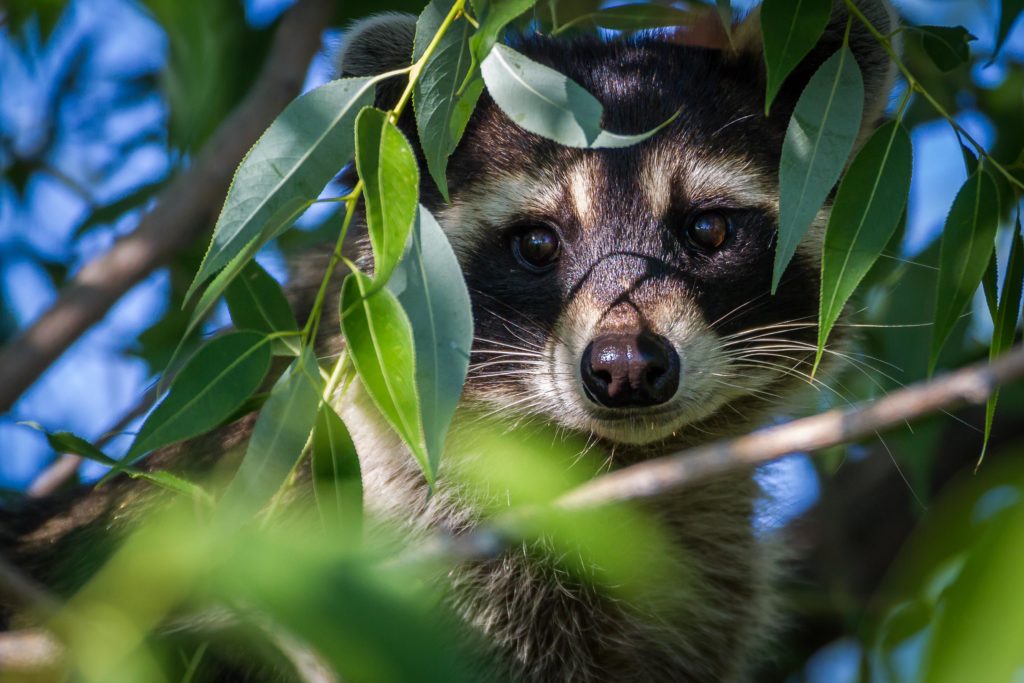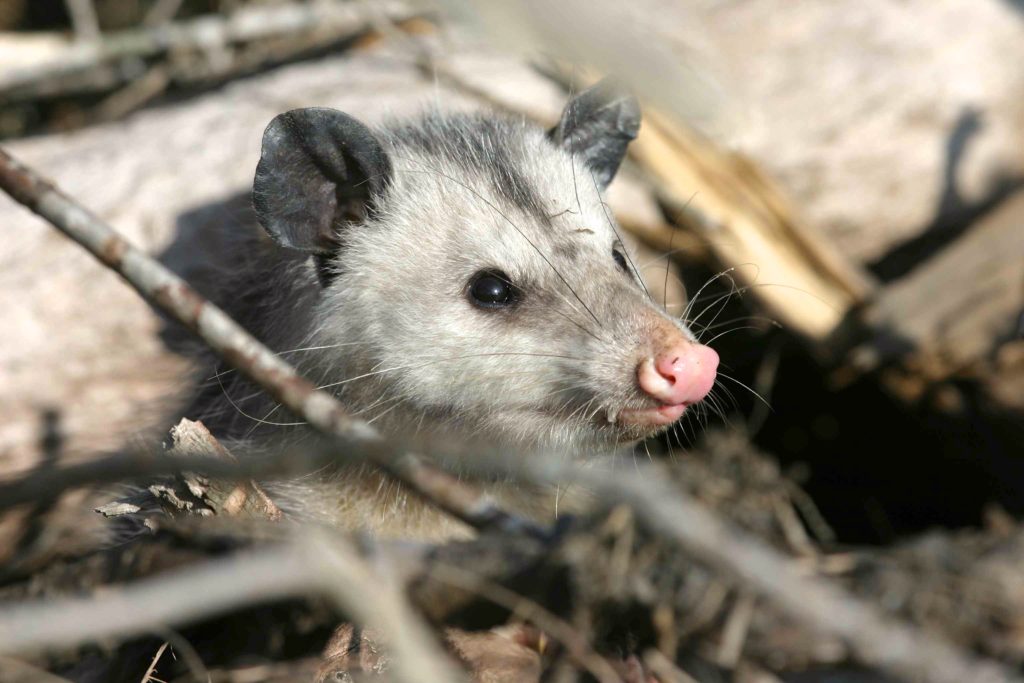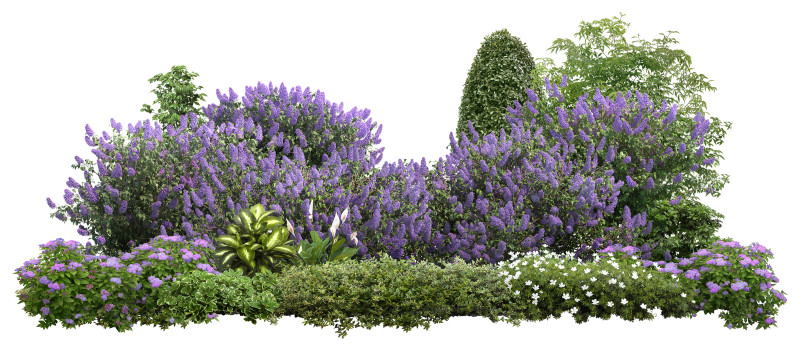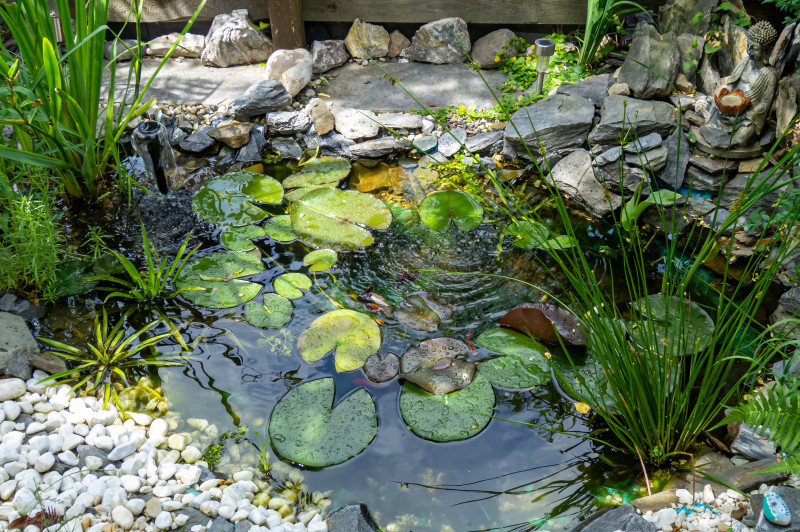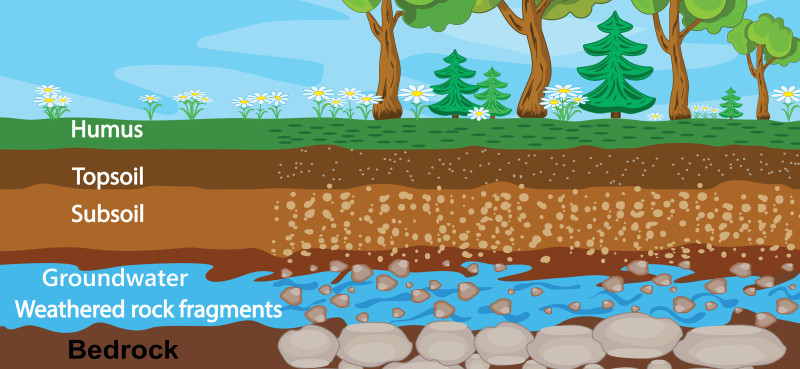It’s a fine thing we do when we share our yards with wildlife. The land we live on once belonged to them and provided all their survival needs. Continuous human development has made it increasingly difficult for dislocated wildlife to find new places. By provisioning our yards with the basics they need we’re returning some habitat to them. And we get to enjoy watching them up close! A win-win situation! A small effort on our part makes a big difference for them. A yard of any size, even a tiny one, can provide the basics of a backyard wildlife habitat: food, water, cover, and nesting places.
Food
Wild animals need food just as we do. A food chain pyramid illustrates how plants and animals feed in a backyard wildlife habitat.
The top level is carnivores. In an urban environment, those are typically owls, hawks, and foxes, and in some areas with suitable habitats, Bobcats and Coyotes. But the pyramid’s base is where it all begins, with plants and the nutrients that feed them. Without plants, nothing else can exist. So, plant plants! And go native, as they’ll offer hardiness and the best adaptation to your local ecosystem.
Plants provide nectar for hummingbirds, butterflies, honeybees, and others, as well as fruits, berries, nuts, and seeds for all manner of animals. Some mammals, including rabbits, squirrels, opossums, and raccoons, eat plants. Many insects, too, feed primarily on them in at least one of their life stages. Insects, in turn, are a food source for most birds, amphibians, and reptiles, as well as some mammals.
Water
Wildlife needs fresh water year-round. In mild weather, terrestrial animals require it for drinking and bathing. Aquatic and semi-aquatic species need water for mating, egg-laying, raising young, and as a habitat.
A birdbath, summer or winter, may be one of the few reliable water sources in your neighborhood, and you’ll be surprised at the amount of activity it’ll draw. Consider adding a heater to it in the winter. When temperatures drop to freezing, a heated birdbath can be more important than food for animals needing to find liquid water to drink.
Water sources can take other forms, too: water feature, pond, whiskey half-barrel filled with water, or something as simple as a flowerpot saucer holding fresh water.
Cover
A backyard wildlife habitat needs “cover,” which means hiding places for wildlife. It’s essential for their protection. It includes plants and dense shrubs, rock and brush piles, hollow logs, a stack of firewood, tall grasses, and deep water for aquatic species.
Although every wild animal is a potential source of food for another, you don’t want them to be sitting ducks, so to speak. Cover gives them places to scurry to when threatened, for hiding while they rest, and an added benefit of offering shelter from the elements. Plants can do double duty if you put in varieties that will also produce food for wildlife.
Nesting places
Wild animals need safe places to raise their young. Hanging a birdhouse is an obvious option, but well-chosen trees, shrubs, and tall grasses also help, as birds, ducks, cottontails, opossums, raccoons, and others use them. A berm might hide an entryway into a fox family’s den. A pond provides a mating and survival habitat for frogs, tadpoles, and dragonflies.
Extras to consider
Rockpile
A pile of large flat rocks placed every which way can protect animals from predators, and some will live within it. Cold-blooded animals, in particular, appreciate a rockpile.
Toads, frogs, snakes, turtles, and insects can’t control their body temperature and take on that of the air surrounding them. Without warmth, their muscles don’t work efficiently or at all. So, they like to bask in the sun to warm up, and rocks, which quickly absorb heat, provide a nifty heating pad. On the other hand, too much heat isn’t good either, and rocks provide places underneath for cooling off.
Brush pile, woodpile, or both
Brush piles and woodpiles provide shelter and safety for wildlife. Some even make their homes there. Mammals use them to shelter from storms, and butterflies might spend the night tucked into crevices.
More reading
Build a brush pile
Earthworms: frequent questions
Sample landscape designs
All about the Virginia Opossum
Prepare your yard for winter wildlife


